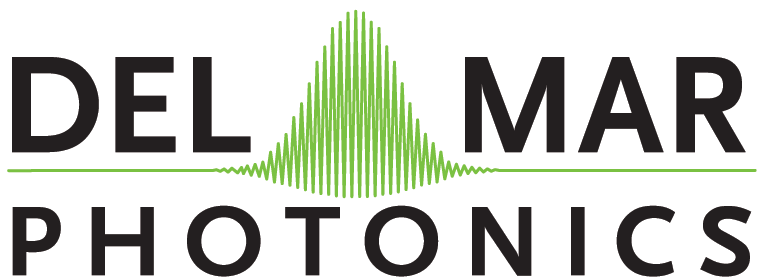

A Bose–Einstein condensate (BEC) is a state of matter of a dilute gas of
weakly interacting bosons confined in an external potential and cooled to
temperatures very near to absolute zero (0 K or −273.15 °C). Under such
conditions, a large fraction of the bosons occupy the lowest quantum state of
the external potential, at which point quantum effects become apparent on a
macroscopic scale.
This state of matter was first predicted by Satyendra Nath Bose and Albert
Einstein in 1924–25. Bose first sent a paper to Einstein on the quantum
statistics of light quanta (now called photons). Einstein was impressed,
translated the paper himself from English to German and submitted it for Bose to
the Zeitschrift für Physik which published it. Einstein then extended Bose's
ideas to material particles (or matter) in two other papers.
Seventy years later, the first gaseous condensate was produced by Eric Cornell
and Carl Wieman in 1995 at the University of Colorado at Boulder NIST-JILA lab,
using a gas of rubidium atoms cooled to 170 nanokelvin (nK) [2] (1.7×10−7 K).
For their achievements Cornell, Wieman, and Wolfgang Ketterle at MIT received
the 2001 Nobel Prize in Physics
Many groups study Bose-Einstein condensates (BECs) formed in ultracold atomic vapors. Usually laser cooling and magnetic trapping are used to creat BECs at temperatures 1 millionth of a degree Kelvin above absolute zero.
CW single-frequency ring Dye laser DYE-SF-077 -
request a
quote
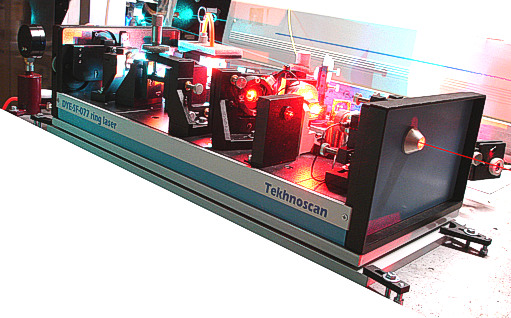
Frequency-stabilized CW single-frequency ring Dye laser, model DYE-SF-077, is a
further development of model DYE-SF-07. It now includes a system of frequency
stabilization on the basis of a thermo-stabilized interferometer and a fast
electronic driver.
Laser DYE-SF-077 features exceptionally narrow generation line width,
which
amounts to less than 100 kHz. DYE-SF-077 sets new standard for generation
line width of commercial lasers. Prior to this model, the narrowest line-width
of commercial dye lasers was as broad as 500 kHz - 1 MHz. It is necessary to
note that the 100-kHz line-width is achieved in DYE-SF-077 without the use of an
acousto-optical modulator, which, as a rule, complicates the design and
introduces additional losses. A specially designed ultra-fast PZT is used for
efficient suppression of radiation frequency fluctuations in a broad frequency
range
570-700 nm, output > 1.5 W (10 W pump), linewidth < 100 kHz rms, frequency drift
< 30 MHz/hour, smooth scanning 6/20 GHz.
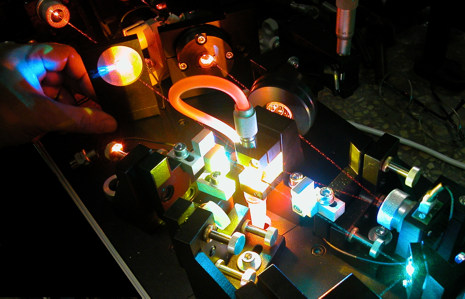
The DYE-SF-077 laser cavity has horizontal orientation, the optical mounts of
the cavity elements are attached to a rigid base plate, which is further
stabilized by a volumetric framework with three invar rods underneath.
Additional passive stability of the position of cavity elements is provided by
the vibration isolating design of the laser base.
Dye laser DYE-SF-077 is the first representative of the new generation of dye lasers that offer to the user virtually the same level of convenience and simplicity of operation as with a solid-state tunable laser. As a result we are able to offer an option of combined configuration of DYE-SF-077 with Ti:Sapphire laser.
Laser DYE-SF-077 may be equipped with a USB compatible interface to remotely scan the generation line of the laser and to perform multi-channel data acquisition. Laser DYE-SF-077 also may be shipped together with an atom cell and a system for reduction of long-term generation line drift. Besides, laser DYE-SF-077 in combination with highly-efficient resonant frequency doubler FD-SF-07 delivers several hundreds milliwatts of narrow-band UV radiation within the 285–350-nm range.

CW single-frequency ring Dye laser DYE-SF-077 - request a quote
Specifications:
| Wavelength range | 570-620 nm 620-700 nm |
| Output | > 1 W at 6 W pump >1.5W at 10W pump |
| Linewidth | < 100 kHz rms1 |
| Frequency drift | < 30 MHz/hour |
| Smooth scanning | > 6 GHz3 |
| Spatial mode | TEM00 |
| Polarization | horizontal |
1. relative to the reference cavity
2. < 1 MHz/hour with frequency stabilization to an atomic/molecular line
(option)
3. up to 20 / 40 GHz (option)
Options:
1. 20 / 40 GHz smooth scanning;
2. 285-350 nm wavelength range with Resonant Frequency Doubler FD-SF-07
3. Absolute Frequency stabilization to an atomic/molecular line
4. + Ti:Sapphire laser (linewidth < 5 kHz) in the same Laser head
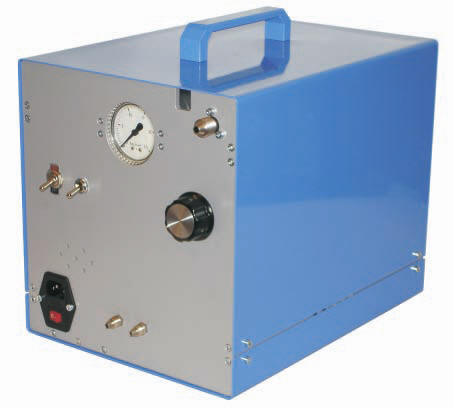
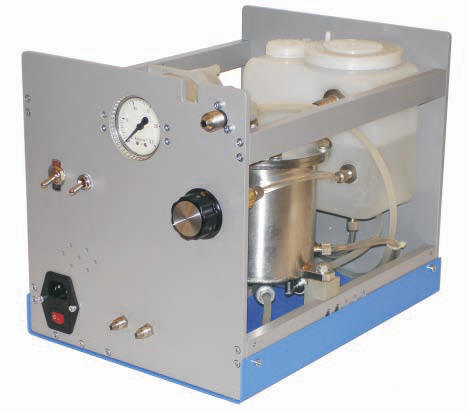
Dye Circulation System
CW single-frequency ring Dye laser DYE-SF-077 (Standard quotation) - request a quote
Actively frequency-stabilized, continuous-wave, single-frequency
ring Dye laser, model DYE-SF-077
Unique DYE-SF-077 laser has more narrow linewidth for Dye lasers on the present
market. DYE-SF-077 laser has super-narrow linewidth (< 70 kHz) and unique Auto
Re-lock function which is extremely useful in a work with frequency stabilized
laser.
Installation of the T&D Scan high resolution Laser Spectrometer based on broadly tunable CW laser at the Drexel University

Del Mar Photonics, Inc.
4119 Twilight Ridge
San Diego, CA 92130
tel: (858) 876-3133
fax: (858) 630-2376
Skype: delmarphotonics
sales@dmphotonics.com
www.twitter.com/TiSapphire